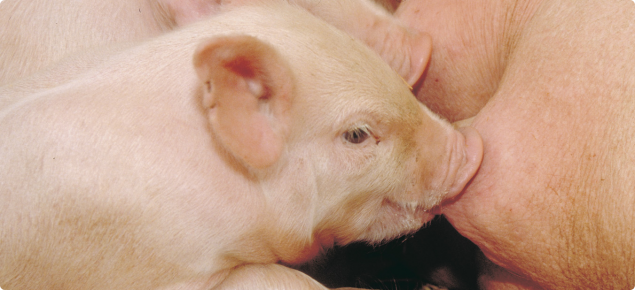Goal one - increase consumption of fresh pork by 25% by 2020
We hope to achieve this by the following three strategies:
Increase uniformity of product and consistency of supply through the supply chain:
- develop specific markets for pigs that just miss optimum specifications
- improve on-farm management and systems
- promote industry wide adoption of genetic and feed management systems
- increase production to increase consistency.
Eliminate boar taint while increasing carcass weight:
- promote immunocastration of all male pigs to reduce cost of production
- educate all sections of the supply chain about boar taint
- include castration as part of the quality assurance program for the industry
- ensure brand integrity.
Deliver innovative presentation and marketing of product for new markets:
- introduce best practice cutting lines and packaging for specific markets
- adopt the outcomes from program 3 of the Pork Cooperative Research Centre (CRC) for High Integrity Australian Pork (HIAP)
- develop partnerships with a range of processors to come up with a better product range
- analyse market potential based on population demographics that will lead to increased pork consumption
- identify market opportunities for heavier carcasses.
Goal two - increase industry productivity with a minimum 4% increase in kg/sow/year or decrease in kg of feed/kg/kg hot standard carcass weight
We hope to achieve this by the following four strategies:
Improve genetic performance:
- ensure protocols and risk assessments for the importation of semen are adequate
- promote the implementation of international genetics
- target high value breeding such as PIC, CEFN and Myora
- Pool the resources of existing breeding companies.
Improve feed conversion:
- improve employment conditions through non-cash initiatives to develop and raise status
- reduce near market mortality
- match diet requirements to genotypes
- overcome market resistance to feed additives
- explore opportunities for alternative feed sources.
Increase skilled labour:
- improve employment conditions through non-cash initiatives to develop and raise status
- encourage businesses to use training opportunities
- promote labour agreements and the importation of labour.
Develop production systems that meet consumer expectations:
- maintain productivity in loose housing systems for sows
- capitalise on the value of piggery effluent
- facilitate compliance with environmental codes of practice and welfare regulations.
Goal three – reduce costs across the supply chain by at least 5% in each sector by 2020
We hope to achieve this by the following four strategies:
Reduce feed costs:
- develop a feed grain supply chain for energy and protein
- identify ingredients that are high yielding and specific to the pork industry
- create incentives to locate and design new feed mills to decrease freight and increase flexibility of grain purchases
- develop algae as a feed ingredient in collaboration with program 4A of the Pork CRC for HIAP.
Reduce industry reliance on outdoor production:
develop incentives to increase indoor production including 10-year contracts on a cost plus basis
identify areas for pork production (hubs) to reduce transport costs.
Reduce structural costs:
- promote options for long term benefits in the supply chain
- reduce export inspection charges.
Improve business management skills:
- promote benchmarking to improve production decisions
- improve financial skills of producers.
- improve staff management skills and approaches
- develop innovative programs for young industry leaders.
Goal four – develop and grow export markets for pork products by doubling exported product by 2017 (6000t to 12 000t)
We hope to achieve this by the following three strategies:
Understand potential export markets in Asia:
- conduct desktop market research on pork products for targeted markets
- construct a matrix of prices and volumes along the value chain for the targeted markets
- develop a draft export strategy including all forms of assistance available.
Develop industry commitment to export growth:
- identify barriers for the WA pork sector to increase exports in designated markets and product lines
- form a WA Pork Products Alliance to achieve success in export markets.
Stimulate in-country market development:
- identify market segments with the greatest potential for increased product
- identify potential partners for the WA Pork Products Alliance in those market segments
- develop innovative solutions to address the needs of the potential partners
- build new supply chain arrangements and government-to-government linkages to facilitate increased export.



